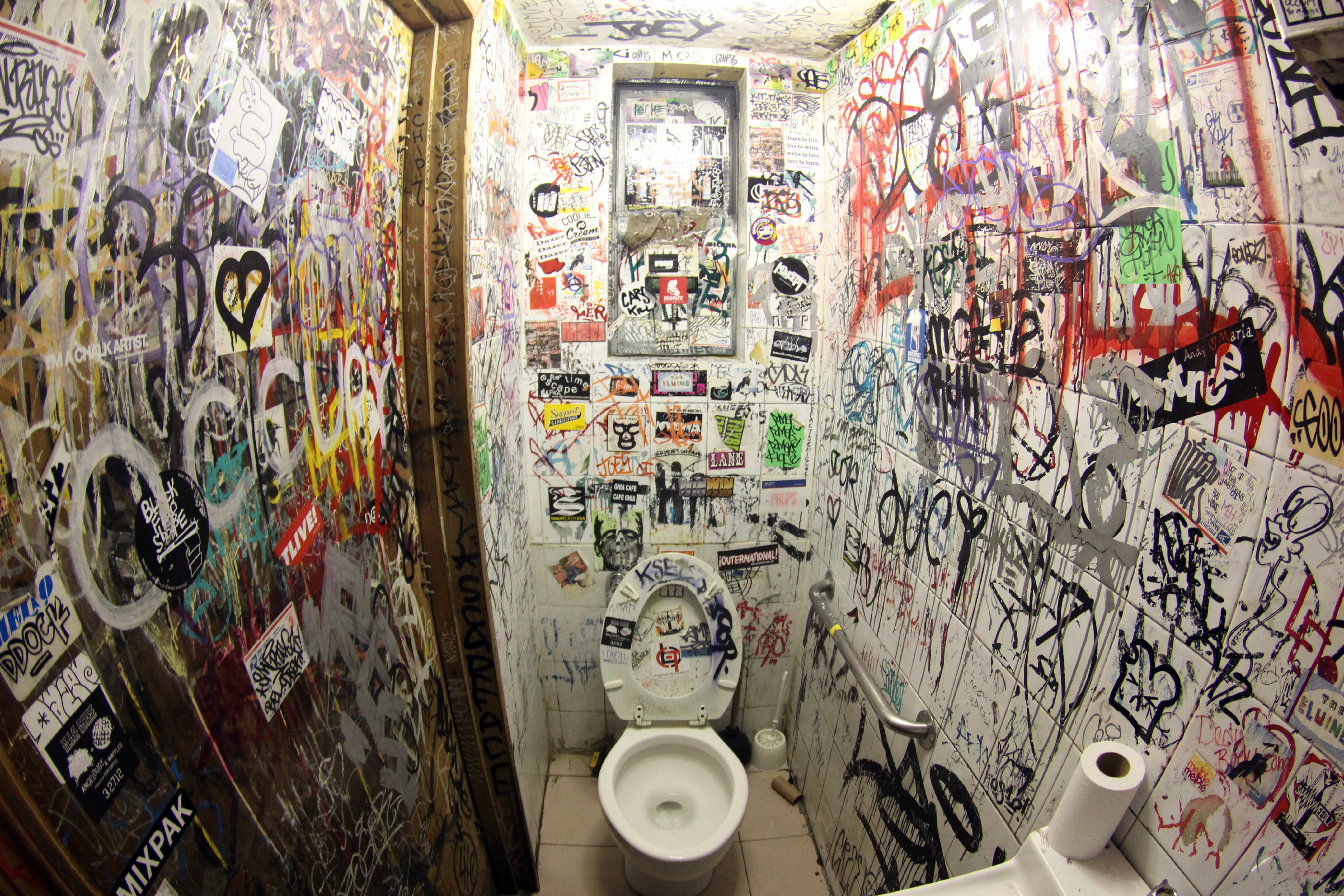Monday, December 1, 2014
On Bathroom Walls
"An oft-cited 1983 study defines three categories of graffiti: Tourist graffiti (“John wuz here”), inner-city graffiti (like tagging and street art), and toilet graffiti (or “latrinalia” as it’s sometimes called in academic literature).
What makes toilet graffiti special, and worthy of its own entire category, is the uniqueness of the space in which people are writing. Public bathrooms are weird places. There’s a tension to doing private activities in a public space, with only the flimsiest of boundaries hiding some of our culture’s biggest taboos—genitals and bodily functions. Hence all the scatological and sexual prose that latrinalia often consists of: People are just deriving inspiration from their surroundings.
Public bathrooms are also (usually) gender-segregated, creating institutionalized single-gender spaces that you almost never see anywhere else. Perhaps because of this, most research on toilet graffiti has studied the differences between what men and women write in their respective stalls. Alfred Kinsey (yes, that Alfred Kinsey) was the first to do this, in the 1950s. He and his team found that men wrote more, and dirtier, things than women, who were more likely to write about romantic love.
“Kinsey and his colleagues suggested that women’s lesser tendency to produce erotic graffiti was due to their greater regard for moral codes and social conventions,” writes Nick Haslam, a professor of psychology at Melbourne University, in his book Psychology in the Bathroom.
These fairly stereotypical analyses persist in toilet graffiti studies over the years. Though some studies say women write just as much as men, men’s is typically seen as being more aggressive and more sexual, while women’s is more conversational and more likely to be about love. Though most bathroom graffiti research was done in the 60s, 70s, and 80s, a couple studies done in the past few years have found similar things.
Nicholas Matthews, a PhD candidate at Indiana University, was the lead author on a 2012 study that analyzed toilet graffiti in nine bars in a Midwestern town. He and his fellow researchers found that the most common type of graffiti was “presence-identifying” (just scrawling your name, for example), but men were identifying their presence more than women. Women, on the other hand, wrote more insults. Matthews explains this using evolutionary psychology, saying that boosting oneself up is a typical male mating strategy, whereas putting other women down is a classic female gambit."
Read the rest here
Labels:
commentary,
Graffiti
Subscribe to:
Post Comments (Atom)

have you ever been to the "les foufounes electriques" famous rock bar in Montreal? they left the tags for many years and this is....speechless
ReplyDelete